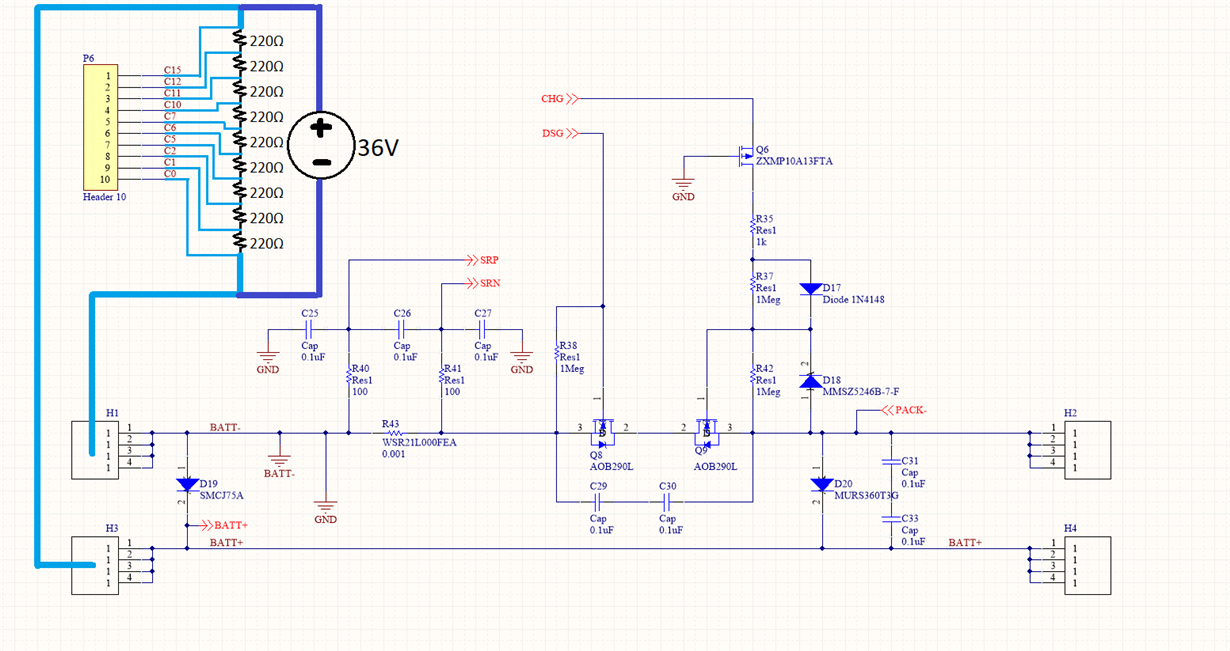Good day,
I've got a few questions regarding charging and discharging;
Here is my setup for testing; I use 9x 220 ohm resistors in parallel to a 36V source to simulate the 9S Li-Ion batteries. No load connected. 
(1) In this setup, what should be the expected Vgs of the CHG/DSG FETs, is it 12V?
With all SYS_STAT faults clear and CHG/DSG bits set to 1, I get about Vgs = 7.07V on Q8 (DSG FET). On the other hand, I get Vgs = 0.73 on Q9 (CHG FET). To give more info, I measured Vgs on Q6 = -2.70V; Vr35 = 0.77V; Vr37 = 0.60, Vr42 = -0.73V.
(2) H2 and H4 are for connecting the Load OR the Charger, right?

